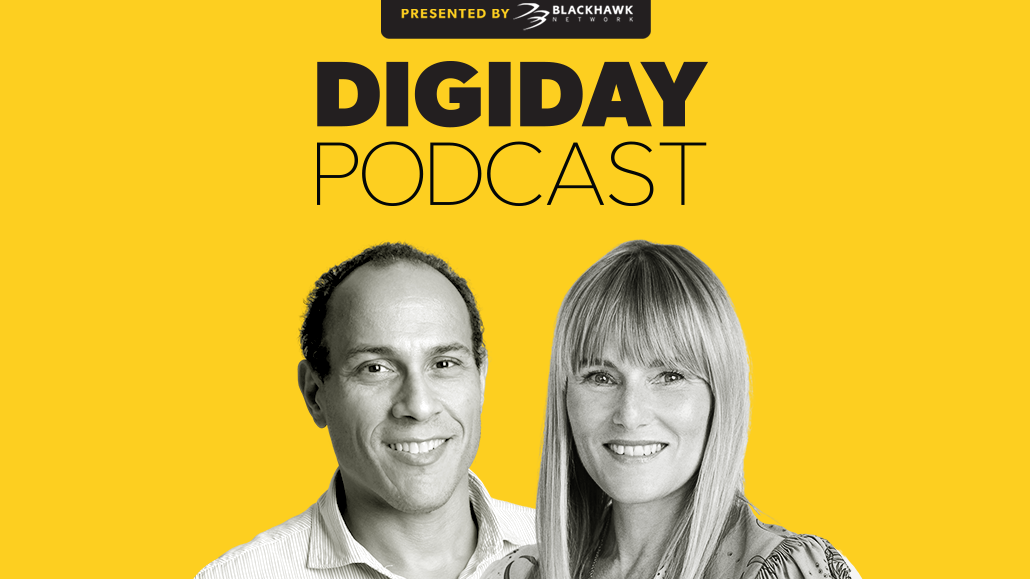Save 50% on a 3-month Digiday+ membership. Ends Dec 5.
How 100-year-old Architectural Digest is becoming a brand for a younger and more diverse audience

Architectural Digest’s global editorial director Amy Astley does not want the 100-year-old magazine to feel stuck in a legacy mindset.
While print subscriptions are still an increasing area of the business, she said, the brand’s digital presence and social media content have become significant ways for AD to grow a much younger and more diverse audience. Enter global digital director David Kaufman, who was brought on last year as a way to further the publication’s international expansion and global integration.
Now Astley and Kaufman are working together to create a larger audience, using all of the channels in their arsenal, including YouTube and Instagram, to fill the funnel of new viewers who have the potential to become subscribers, or become online shoppers as AD continues to build out its shoppable video and content.
In the latest episode of the Digiday Podcast, the pair discusses why the pandemic led to new opportunities for experimentation, like launching new content verticals and building out its commerce business and leaning further into platforms frequented by Gen Z and millennials.
Here are a few highlights from the conversation, which have been lightly edited for length and clarity.
AD isn’t for one audience
Ad position: web_incontent_pos1
There’s an audience on YouTube who may not be the traditional ad audience. But I felt very strongly when I started that we needed to meet audiences where they are, and be on many platforms and not say in a rigid way that AD is only for professional decorators or very wealthy people. It’s not a growth strategy. We need to be culturally relevant. We want them to be involved in a dialogue with us and not to have it feel like a closed ecosystem.
We meet the audience where they are and people are experiencing AD in very different ways. We have the loyal print audience, and it’s growing. We know that that young person who is really loving [the] YouTube experience of “Open Door,” that may be all they need, but many of them — and the data bears this out — will go and join our Instagram and become a follower. And then that may lead them they’ll go on our Instagram story and swipe up there for our e-commerce. And maybe eventually they want to buy a subscription or maybe they won’t become a print reader. But I don’t have an end game like they must all buy a magazine.
Adding affiliate opportunities to video franchises
One of the things we’re doing is making sure that e-commerce is integrated between print and the web and digital. So for instance, we had a story in April with [Hamilton actors] Daveed Diggs and Emmy Raver-Lampman and their home was extremely beautiful and comfortable, but it actually was pretty affordable. So we created an entire separate digital piece on how to shop the look, which we hadn’t done before. It was an obvious play — everybody wants what they have, it’s pretty affordable, so let’s create another piece of content to focus on shopping.
[A big piece of the commerce strategy has] been about going back to our “Open Door” videos and adding shoppable elements. We have “Open Door” videos from a year ago that every month [have] 100,000 views. They’re just sitting there, the lowest hanging fruit, why not go back and add elements to all of those. So the aggregate and the combination of all these really simple, low-hanging efforts can really pay off in the end and help us meet these ambitious yet attainable KPIs that we have.
Ad position: web_incontent_pos2
Integrating the global audience
[AD has started doing more] global drops and this involves us working with all of our 10-plus sister or brother brands to identify stories that will have immediate global appeal, and work together as a group to basically drop them at the same time all over the world. For instance, the story about The One, this insane house in Bel Air that was $10 million gazillion with 52 swimming pools and a bowling alley, we had one writer go and write the story and then we had that content, the copy and the photos and the captions all sent it to all of our sister brands. Then the story dropped at the same time all over the world. From an economics point of view, economies of scale, it’s a serious win-win for everybody. We gave the writer a little bit extra, but it was certainly far cheaper to do one story than to do 10 stories for all the brands. But more importantly, we’re able to take a story that we know is interesting and we know is super cool and [see if international audiences thought it was] super cool? And that, for me, is just really exciting to learn what the audiences around the world want, especially as we’re kind of in the beginning of this, this global consolidation and integration.
More in Media

Digiday+ Research Subscription Index 2025: Subscription strategies from Bloomberg, The New York Times, Vox and others
Digiday’s third annual Subscription Index examines and measures publishers’ subscription strategies to identify common approaches and key tactics among Bloomberg, The New York Times, Vox and others.

From lawsuits to lobbying: How publishers are fighting AI
We may be closing out 2025, but publishers aren’t retreating from the battle of AI search — some are escalating it, and they expect the fight to stretch deep into 2026.

Media Briefing: Publishers turn to vertical video to compete with creators and grow ad revenue in 2026
Publishers add vertical video feeds to their sites to boost engagement, attract video ad spend and compete with news creators.
Ad position: web_bfu




